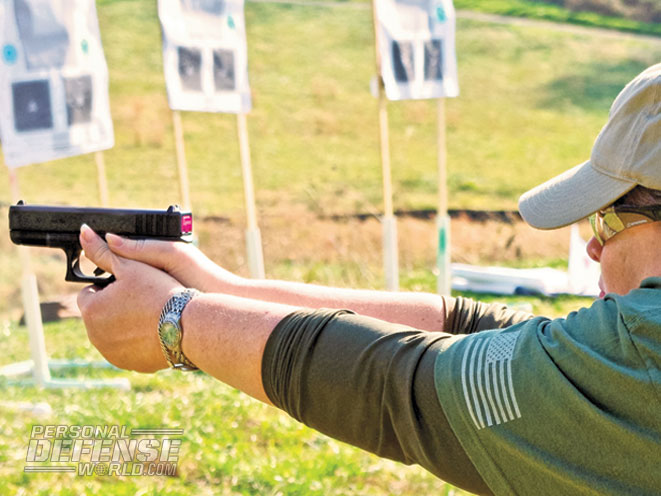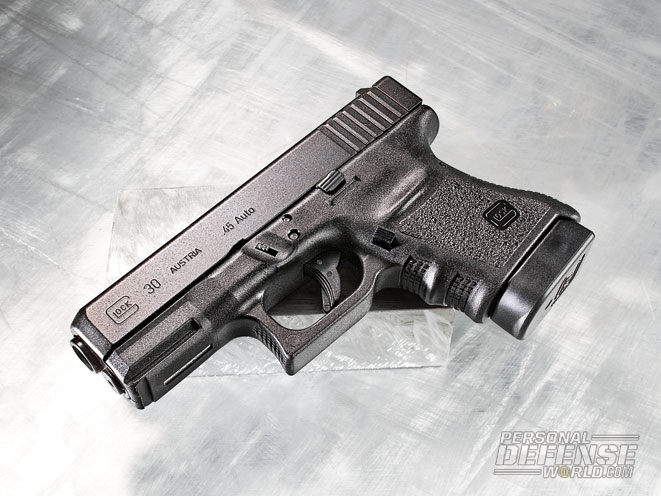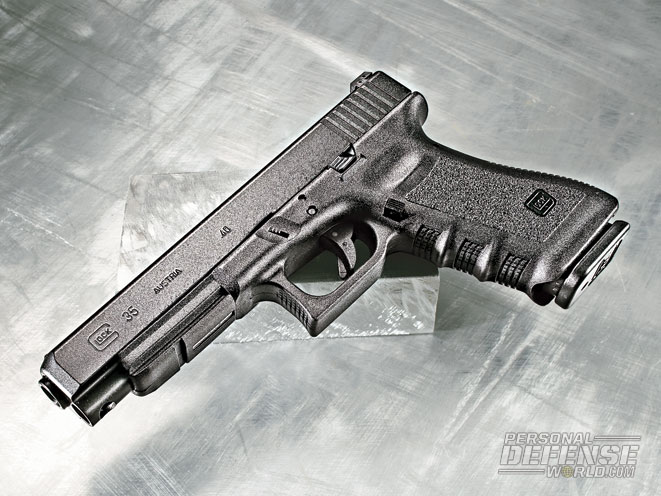Ask the same question to three people and you will get three different answers and opinions. Ask firearm trainers about GLOCK pistols and you will more than likely get the same answer. When I asked three well-known and respected firearm instructors about GLOCK pistols, they were frank and opinionated, but they all had the same underlying message: GLOCK pistols are safe, easy to use and reliable. The three professionals I interviewed were Massad Ayoob, Sara Ahrens and Lynne Finch.
Massad Ayoob is a former law enforcement officer and noted firearm writer and trainer. He literally wrote the books on combat handguns and firearm training. Ayoob runs the Massad Ayoob Group (MAG), a training group for responsible armed citizens.
You will remember Sara Ahrens as a contestant on the third season of Top Shot. Ahrens was the first woman in her police department to become a member of the SWAT team. She has trained other law enforcement officers and civilians. Ahrens has seen that “many of the ‘struggling’ shooters were no longer struggling after switching to GLOCKs, and officers that were proficient shot even better and faster.”
Advertisement — Continue Reading Below
Lynne Finch is a certified NRA pistol instructor and an ICE defensive firearms coach. She runs her own firearms training company, Female and Armed, and writes a blog of the same name.
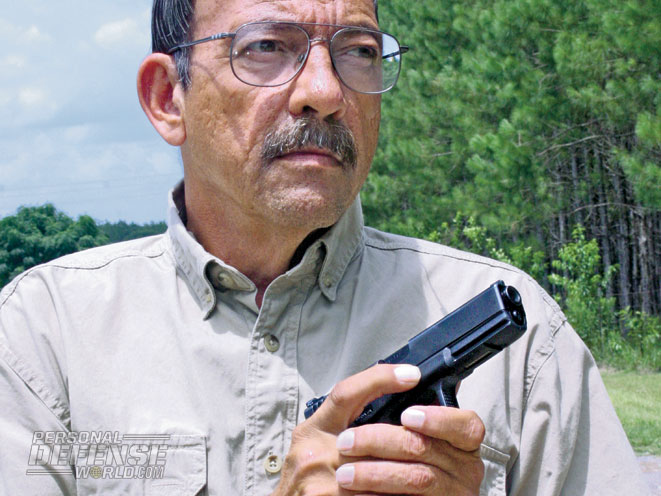
Q: What were your first training experiences with GLOCK pistols?
Massad Ayoob: Ever since students began showing up with them in the early to mid-1980s, I have taught with them and use them as teaching guns more often than any other brand. I went through the GLOCK armorer school and GLOCK instructor school in 1990.
Advertisement — Continue Reading Below
Sara Ahrens: My background training with GLOCKs began when I was a firearms instructor for an LE agency of about 285 sworn officers in Illinois. Having recently retired, I now mostly spend time instructing civilians.
Lynne Finch: I’ve been teaching beginning and experienced shooters for about three years, and I use a GLOCK exclusively with my students for demonstrations of shooting fundamentals.
RELATED: GLOCK AUTOPISTOLS 2015 Buyer’s Guide
Advertisement — Continue Reading Below
Q: Why do you train with GLOCK pistols?
Finch: I use GLOCKs because of their reliability and how forgiving they are on a moderate soft wrist. Being able to break the pistol down in seconds, to show the insides and explain how everything works—without additional tools—is also an asset in the classroom.
Ahrens: When I worked in law enforcement, my agency issued officers their firearms but also allowed officers to purchase their own firearms. With about 285 sworn officers, more than 150 chose to purchase a GLOCK to carry on duty versus taking the free gun. I think that speaks volumes to the level of confidence. The features that are offered on the Gen4 GLOCKs make it possible to choose an appropriate grip size and reverse the magazine catch so that officers with smaller hands can manipulate the firearm with the least amount of grip adjustments.
Advertisement — Continue Reading Below
Ayoob: GLOCKs are the most common pistols civilian students bring to my classes, and they’re even more popular with police officers I train.
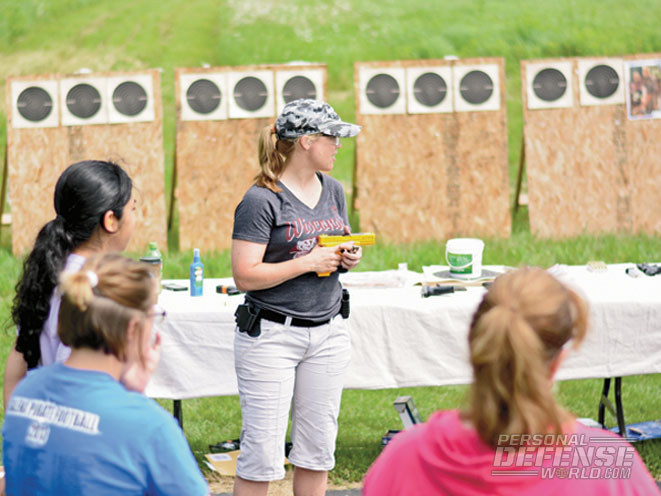
Q: How do students (first-time shooters, advanced shooters and LE) react to GLOCKs?
Ahrens: The shooters who most embrace the GLOCK platform are those who have been forced to shoot a gun that doesn’t fit them well. When people have been forced to shoot a firearm that causes them discomfort and with which they are inconsistent or inaccurate, from what I’ve seen, switching them to a GLOCK pistol is literally a life-changing experience.
Advertisement — Continue Reading Below
Finch: Some first-time students come with a gun that is not the right fit for them. I put a GLOCK in their hand and they leave talking about going GLOCK shopping. More advanced students often have chosen their firearm, but many are willing to try the GLOCK. Advanced students are usually impressed by the GLOCK’s easy takedown process for cleaning and reliability.
Ayoob: There is no handgun easier to learn to shoot well. The more advanced they are, the more they appreciate the GLOCK’s reliability and ease of maintenance and repair, and being able to transfer their skills among GLOCKs of different sizes and calibers on the same platform.
RELATED: First Look – 4 New MOS Configuration Glocks
Advertisement — Continue Reading Below
Q: How have GLOCKs impacted LE training courses?
Ahrens: Our officers work in a city that ranks in the top 10 most dangerous cities per capita. We have officer-involved shootings with enough frequency that officers need to have the confidence that their gun will perform reliably when expected and they’ll hit their target.
Finch: The availability of training aids, such as blue guns and SIRTs, in the GLOCK configuration makes a huge difference when training others for dynamic shooting situations. GLOCK pistols are also consistent and provide a great value for not a lot of money.
Advertisement — Continue Reading Below
Ayoob: GLOCK pistols have changed the paradigm significantly.
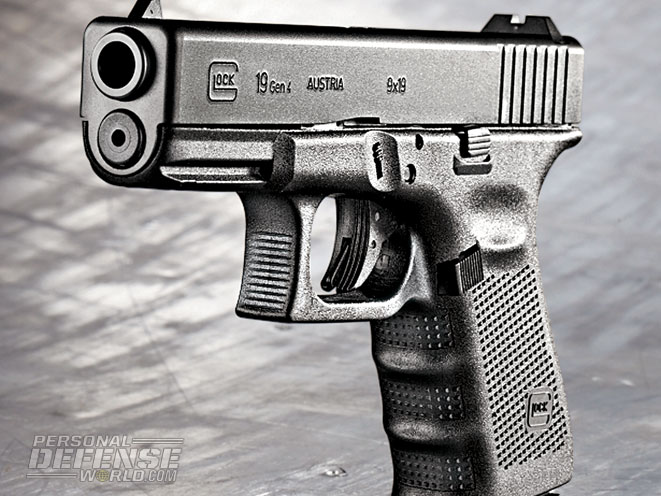
Q: What is your favorite GLOCK pistol and why?
Ahrens: The Glock 35. I own two—a Gen2 and a Gen3—and they are the most accurate firearms I own. I love the trigger reset, and I have full confidence in my ability with that firearm and in its performance.
Advertisement — Continue Reading Below
Finch: My carry gun is a Glock 19. I call it the “Goldilocks” approach; it isn’t too big, it isn’t too small—it’s just right.
Ayoob: My personal favorite is the GLOCK 30. I like the .45 AUTO round, and the Glock 30 has spectacular accuracy with it, particularly for a pistol that compact.
RELATED: Glock’s 4 New Threaded Barrel Models – Glock 17 TB, Glock 19 TB, Glock 21 SF TB & Glock 23 TB
Needless to say, it is always a good idea to listen to what the trainers think when it comes to selecting a firearm for your own personal needs. These three experts have access to practically any firearm they could want, and they choose GLOCK. Its combination of accuracy, reliability and simplicity of use make it a true winner for them. Undoubtedly, you would have a similar experience. So, take a look at what is offered today and pick out just the right one for you. I am sure you would get a knowing nod of approval from any of these three experts.

